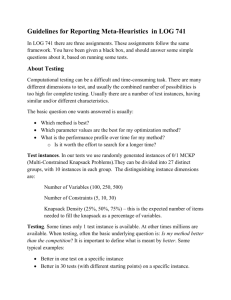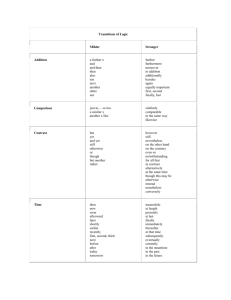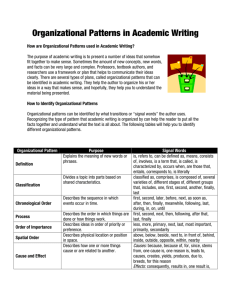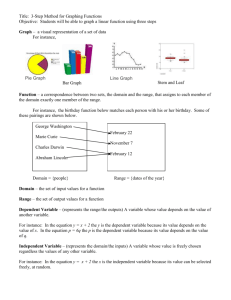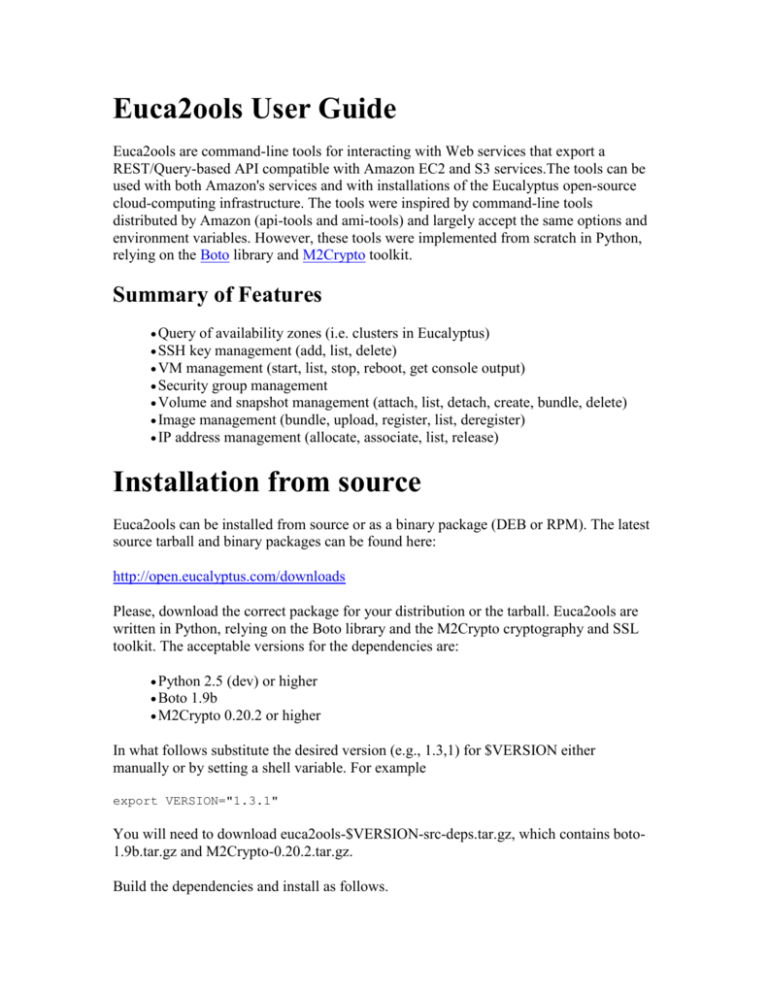
Euca2ools User Guide
Euca2ools are command-line tools for interacting with Web services that export a
REST/Query-based API compatible with Amazon EC2 and S3 services.The tools can be
used with both Amazon's services and with installations of the Eucalyptus open-source
cloud-computing infrastructure. The tools were inspired by command-line tools
distributed by Amazon (api-tools and ami-tools) and largely accept the same options and
environment variables. However, these tools were implemented from scratch in Python,
relying on the Boto library and M2Crypto toolkit.
Summary of Features
Query of availability zones (i.e. clusters in Eucalyptus)
SSH key management (add, list, delete)
VM management (start, list, stop, reboot, get console output)
Security group management
Volume and snapshot management (attach, list, detach, create,
Image management (bundle, upload, register, list, deregister)
IP address management (allocate, associate, list, release)
bundle, delete)
Installation from source
Euca2ools can be installed from source or as a binary package (DEB or RPM). The latest
source tarball and binary packages can be found here:
http://open.eucalyptus.com/downloads
Please, download the correct package for your distribution or the tarball. Euca2ools are
written in Python, relying on the Boto library and the M2Crypto cryptography and SSL
toolkit. The acceptable versions for the dependencies are:
Python 2.5 (dev) or higher
Boto 1.9b
M2Crypto 0.20.2 or higher
In what follows substitute the desired version (e.g., 1.3,1) for $VERSION either
manually or by setting a shell variable. For example
export VERSION="1.3.1"
You will need to download euca2ools-$VERSION-src-deps.tar.gz, which contains boto1.9b.tar.gz and M2Crypto-0.20.2.tar.gz.
Build the dependencies and install as follows.
You will need to install python-dev, swig, help2man, and libssl-dev to build the
following libraries.
Download
euca2ools-$VERSION.tar.gz and euca2ools-$VERSION-srcdeps.tar.gz. Below, we will assume that these tarballs are located in the current
directory.
Install
Boto
tar zvxf euca2ools-$VERSION-src-deps.tar.gz
cd euca2ools-$VERSION-src-deps
tar zxvf boto-1.9b.tar.gz
cd boto-1.9b
sudo python setup.py install
cd ..
Install
M2Crypto
tar zxvf M2Crypto-0.20.2.tar.gz
cd M2Crypto-0.20.2
sudo python setup.py install
cd ..
Install
Euca2ools in /usr/local/bin, adding it to your $PATH, if necessary
cd ..
tar zxvf euca2ools-$VERSION.tar.gz
cd euca2ools-$VERSION
sudo make
export PATH=/usr/local/bin:$PATH # not necessary on most installations
Uninstalling
sudo make uninstall
You may also wish to delete euca2ools, boto and M2Crypto from your python package
installation directory.
Installing Euca2ools on CentOS 5
In what follows, the value of $VERSION must be substituted accordingly (e.g., as 1.1,
1.2, etc.) for example we can set the value of 1.2 using bash:
export VERSION=1.2
There are 2 ways to obtain the packages:
1. Yum option: Packages are available from our yum repository. To use it, create
'/etc/yum.repos.d/euca.repo' file with the following four lines:
2. [euca2ools]
3. name=Euca2ools
4. baseurl=http://www.eucalyptussoftware.com/downloads/repo/euca2oo
ls/$VERSION/yum/centos/
5. enabled=1
and install euca2ools
yum install euca2ools.$ARCH --nogpgcheck
where $ARCH is either i386 or x86_64 and $VERSION is either 1.1 or 1.2
6. Tarball option: Download the appropriate tarball from
http://open.eucalyptus.com/downloads
Untar the bundle in a temporary location, install Python 2.5, and install
euca2ools
tar zxvf euca2ools-$VERSION-*.tar.gz
cd euca2ools-$VERSION-*
sudo -s
yum install -y swig
rpm -Uvh python25-2.5.1-bashton1.x86_64.rpm python25-libs2.5.1-bashton1.x86_64.rpm euca2ools-$VERSION-*.x86_64.rpm
(replace x86_64 with i386 for 32-bit hosts)
NOTE: please use '-Uvh' and not '-i'.
Installing Euca2ools on OpenSUSE 11
In what follows, the value of $VERSION must be substituted accordingly (e.g., as 1.1,
1.2, etc.) for example we can set the value of 1.2 using bash:
export VERSION=1.2
There are 2 ways to obtain the packages:
1. Zypper option: packages are available from our repository. To use it:
2. zypper ar --refresh
http://www.eucalyptussoftware.com/downloads/repo/euca2ools/$VER
SION/yum/opensuse Euca2ools
answer question about trusting packages from this repository then refresh it
zypper refresh Euca2ools
and now install it
zypper install euca2ools
3. Tarball option: Download the appropriate tarball from
http://open.eucalyptus.com/downloads
Untar the bundle in a temporary location, and install euca2ools
tar zxvf euca2ools-$VERSION-*.tar.gz
cd euca2ools-$VERSION-*
sudo -s
zypper install swig
rpm -Uvh euca2ools-$VERSION-*.x86_64.rpm
NOTE: please use '-Uvh' and not '-i'.
Ubuntu Jaunty
Euca2ools 1.1 can be installed on Ubuntu Jaunty using binary DEB packages. To do so,
add somewhere in /etc/apt/sources.list file the following line:
deb
http://www.eucalyptussoftware.com/downloads/repo/euca2ools/1.1/ubuntu
jaunty universe
And run:
apt-get update
apt-get install euca2ools
You will have to type "Y" if you see a warning like,
WARNING: The following packages cannot be authenticated!
...
Install these packages without verification [y/N]? y
After installation you may remove the entry from sources.list if you don't want to
update Eucalyptus packages automatically.
Debian Squeeze
Euca2ools can be installed on Debian squeeze using binary DEB packages. To install
them, add our repository to the list of repositories for your system to use. To do so, add
somewhere in /etc/apt/sources.list file the following line:
For 1.1:
deb
http://www.eucalyptussoftware.com/downloads/repo/euca2ools/1.1/debian
squeeze contrib
For 1.2 (including release candidates):
deb
http://www.eucalyptussoftware.com/downloads/repo/euca2ools/1.2/debian
squeeze main
And then run:
apt-get update
apt-get install euca2ools python-boto=1.8d-1
You will have to type "Y" if you see a warning like,
WARNING: The following packages cannot be authenticated!
...
Install these packages without verification [y/N]? y
After installation you may remove the entry from sources.list if you don't want to
update Eucalyptus packages automatically.
Using Euca2tools Overview
Euca2ools use cryptographic credentials for authentication. Two types of credentials are
issued by EC2- and S3-compatible services: x509 certificates and keys. While some
commands only require the latter, it is best to always specify both types of credentials.
Furthermore, unless the Web services reside on 'localhost', the URLs of the EC2- and S3compatible service endpoints must also be specified.
The credentials and URLs can be specified via the command line option or by setting
environment variables as follows:
Variable
Option
Explanation
EC2_URL
-U or --url [url]
http://host:8773/services/Eucalyptus
or http://ec2.amazonaws.com
or https://ec2.amazonaws.com:443
S3_URL
-U or --url [url]
http://host:8773/services/Walrus
or http://s3.amazonaws.com
or https://s3.amazonaws.com:443
EC2_ACCESS_KEY
-a or --access-key [key] Access Key ID / Query ID
EC2_SECRET_KEY
-s or --secret-key [key]
Secret Access Key / Secret Key
EC2_CERT
-c or --cert [file]
EC2_PRIVATE_KEY
-k or --privatekey [file] user's PEM-encoded private key
EUCALYPTUS_CERT --ec2cert_path [file]
user's PEM-encoded certificate
OPTIONAL path to cloud cert
If you are running Euca2ools against Eucalyptus, sourcing the eucarc file that is included
as part of the credentials zip-file that you downloaded from the Eucalyptus Web interface
should be enough to set up all of the above variables correctly.
Commands start with euca- and typing <command name> --help will print a basic help
message. In addition, running man <command name> will bring up a man page.
Image Management
In order to use run instances from images that you have created (or downloaded), you
need to bundle the images with your cloud credentials, upload them and register them
with the cloud. Following examples show how you would perform the necessary steps.
Bundling images
The examples here assume that you have sourced the eucarc config file obtained when
you downloaded user credentials.
"euca-bundle-image" can be used to bundle an image for use with Eucalyptus or Amazon.
A bundled image consists of a manifest file and several image parts.
For instance, to bundle an image "image.img" for user id "123456789111" in the
directory "image-dir"
euca-bundle-image -i image.img -u 12345678111 -d image-dir
OR, if you wish to specify credentials separately ("cert-xyz.pem" and "pk-xyz.pem" are
the user certificate and private key PEM files, respectively).
euca-bundle-image -i image.img -u 123456789111 -d image-dir -c certxyz.pem -k pk-xyz.pem
To bundle an image for use with Amazon, make sure you locate the Amazon ec2 cert file
that is provided as part of the EC2 AMI tools. This file is generally located in
$EC2_AMITOOL_HOME/etc/ec2/amitools/cert-ec2.pem
euca-bundle-image -i image.img -u 123456789111 -d image-dir -c certabc.pem -k pk-abc.pem --ec2cert
$EC2_AMITOOL_HOME/etc/ec2/amitools/cert-ec2.pem
Make sure that the "cert-abc.pem" and "pk-abc.pem" files in the above example are your
Amazon credentials (not your Eucalyptus credentials).
For more options, type,
euca-bundle-image --help
or refer to the manpage for "euca-bundle-image."
Uploading an image
To upload an image bundled with "euca-bundle-image" you can use "euca-uploadbundle."
For example, to upload the bundle corresponding to the manifest
"image.img.manifest.xml" to the bucket "image-bucket," you would run the following
command,
euca-upload-bundle -b image-bucket -m image.img.manifest.xml
For more options, type
euca-upload-bundle --help
or refer to the manpage for "euca-upload-bundle."
Registering an image
Bundle images that have been uploaded to the cloud need to be registered with the cloud
prior to running instances.
For instance, to register a bundled image referenced by the manifest file
"image.img.manifest.xml" that has been uploaded to the bucket "image-bucket" type the
following command,
euca-register image-bucket/image.img.manifest.xml
For more options, refer to the manpage for "euca-register" or type,
euca-register --help
Downloading an image
Bundled images that have been uploaded may also be downloaded or deleted from the
cloud.
For instance, to download the image(s) that have been uploaded to the bucket "imagebucket" you may use the following command,
euca-download-bundle -b image-bucket
For more options, type,
euca-download-bundle --help
Deleting a bundled image
To delete a bundled image, use "euca-delete-bundle."
For instance, to delete the images in bucket "image-bucket" you can use the following
command,
euca-delete-bundle -b image-bucket
You can specify a manifest using the "-m" or "--manifest" argument if you wish to delete
a specific bundle.
To delete the bucket after deleting the bundled image,
euca-delete-bundle -b image-bucket --clear
A bucket can only be deleted when it is empty.
For more options, type,
euca-delete-bundle --help
Unbundling an image
To unbundle a previously bundled image, use "euca-unbundle"
For instance, to unbundle the bundled image referenced by the manifest
"image.img.manifest.xml" to the directory image-dir, use the following command,
euca-unbundle -m image.img.manifest.xml -d image-dir
For more options, try,
euca-unbundle --help
VM Control
A cloud will let users control virtual machine (VM) instances using uploaded images as a
template. The following commands can be used to control VM instances.
Displaying instances currently running
You may use "euca-describe-instances," which will display a list of currently running
instances.
euca-describe-instances
To get information about a specific instance, you can use the instance id as an argument
to euca-describe-instances. For example,
euca-describe-instances i-43035890
For more options, type,
euca-describe-instances --help
Running instances
"euca-run-instances" will allow you to deploy VM instances of images that have been
previously uploaded to the cloud.
For instance, to run an instance of the image with id "emi-53444344" with the kernel
"eki-34323333" the ramdisk "eri-33344234" and the keypair "testkey" you can use the
following command,
euca-run-instances -k testkey --kernel eki-34323333 --ramdisk eri33344234 emi-53444344
To run more than one instances, you may use the "-n" or "--instance-count" option.
For more help, try,
euca-run-instances --help
or refer to the manpage for "euca-run-instances."
Shutting down instances
You may shutdown running instances using the "euca-terminate-instances" command.
For example, to terminate an instance "i-34523332"
euca-terminate-instance i-34523332
For more options, type,
euca-terminate-instances --help
or refer to the manpage.
Rebooting instances
To reboot running instances, you can use "euca-reboot-instances." For example, to reboot
the instance "i-34523332"
euca-reboot-instances i-34523332
A reboot will preserve the root filesystem for the instance across restarts.
Networking and Security
You can assign IP address to instances dynamically, unassign addresses, create security
groups and assign networking rules to security groups.
Allocating and associating IP addresses
You may use "euca-allocate-address" and "euca-associate-address" to allocate IP
addresses and associate public IP addresses with instances, respectively.
In the following example, we will allocate an IP address and associate it with the instance
"i-56785678".
euca-allocate-address
ADDRESS
a.b.c.d
euca-associate-address -i i-56785678 a.b.c.d
Disassociating and Releasing addresses
You may use "euca-disassociate-address" and "euca-release-address" to disassociate an
IP address from an instance and to release the IP address to the global pool. For instance,
to release and disassociate the address "a.b.c.d."
euca-disassociate-address a.b.c.d
euca-release-address a.b.c.d
Creating a security group
You can create a security group using the "euca-add-group" command. For instance, to
create a group named "mygroup," you may use the following command,
euca-add-group -d "mygroup description" mygroup
Security groups may be specified when running instances with "euca-run-instances"
using the "-g" parameter.
Adding networking rules to security groups
By default, a security group denies incoming network traffic from all sources. You may
add networking related rules to security groups using the command "euca-authorize."
To see the entire list of options, type,
euca-authorize --help
For example, to allow incoming ssh (port 22) traffic to the security group "mygroup" you
may use the following command, which specifies a protocol (tcp) a port (22) and a CIDR
source network (0.0.0.0/0, which refers to any source):
euca-authorize -P tcp -p 22 -s 0.0.0.0/0 mygroup
Instead of specifying a CIDR source, you may instead specify another security group to
allow access from:
euca-authorize --source-group someothergroup --source-group-user
someotheruser -P tcp -p 22 mygroup
Revoking networking rules from security groups
Revocation works the same way as addition (i.e. the command takes the same
parameters), except that you should use the "euca-revoke"
euca-revoke -P tcp -p 22 -s 0.0.0.0/0 mygroup
euca-revoke --help
will list all options.
Deleting a security group
You may use "euca-delete-group" to delete a security group. For example,
euca-delete-group mygroup
will delete the security group "mygroup."
Using Block Storage
You can create dynamic block volumes, attach volumes to instances, detach volumes,
deletes volumes, create snapshots from volumes and create volumes from snapshots with
your cloud. Volumes are raw block devices. You can create a filesystem on top of an
attached volume and mount the volume inside a VM instance as a block device. You can
also create instantaneous snapshots from volumes and create volumes from snapshots.
Creating a volume
To create a dynamic block volume, use "euca-create-volume."
For instance, to create a volume that is 1GB in size in the availability zone "myzone" you
may use the following command,
euca-create-volume --size 1 -z myzone
To list availability zones, you may use "euca-describe-availability-zones"
You may also create a volume from an existing snapshot. For example, to create a
volume from the snapshot "snap-33453345" in the zone "myzone" try the following
command,
euca-create-volume --snapshot snap-33453345 -z myzone
For more options, type,
euca-create-volume --help
Attaching a volume to an instance
You may attach block volumes to instances using "euca-attach-volume." You will need to
specify the local block device name (this will be used inside the instance) and the
instance identified. For instamce, to attach a volume "vol-33534456" to the instance "i99838888" at "/dev/sdb" use the following command,
euca-attach-volume -i i-99838888 -d /dev/sdb vol-33534456
You can attach a volume to only one instance at a given time.
Detaching a volume
To detach a previously attached volume, use "euca-detach-volume." For example, to
detach the volume "vol-33534456"
euca-detach-volume vol-33534456
You must detach a volume before terminating an instance or deleting a volume. If you
fail to detach a volume, it may leave the volume in an inconsistent state and you risk
losing data.
Delete a volume
To delete a volume, use "euca-delete-volume." For example, to delete the volume "vol33534456" use the following command
euca-delete-volume vol-33534456
You may only delete volumes that are not currently attached to instances.
Creating a snapshot
You may create an instantaneous snapshot of a volume. A volume could be attached and
in use during a snapshot operation. For example, to create a snapshot of the volume "vol33534456" use the following command
euca-create-snapshot vol-33534456
Deleting a snapshot
To delete a snapshot, use "euca-delete-snapshot." For example, to delete the snapshot
snap-33453345, use the following command,
euca-delete-snapshot snap-33453345
Changelog
Version 1.1 (2009-11-05)
Addresses
incompatibilities in some uncommon command line
options
number of bug fixes including
#461301 #450044 #444747 #444105 #444097 #436950 #436947 #404951
#429010 #427367 #424212 #423500
#419583 #417937 #413735 #409732 #407710 #401225 #403244 #402670
#401172 #401222 #401190 #404951
#429010 #427367 #424212 #423500 #419583 #417937 #419583 #413735
#409732 #407710 #401225 #403244
#402670 #401172 #401222 #401190
Addressed incompatibility in several command line options.
Number of fixes for euca-bundle-vol
euca-describe-availability-zones accepts "--region"
A
Better error reporting for fault strings.
Incorporated changes to debian rules from
Steffen Moeller et al
Version 1.0 (2009-07-17)
License
Software License Agreement (BSD License)
Copyright (c) 2009, Eucalyptus Systems, Inc. All rights reserved.
Redistribution and use of this software in source and binary forms, with or without
modification, are permitted provided that the following conditions are met:
Redistributions
of source code must retain the above copyright notice, this list of
conditions and the following disclaimer.
Redistributions in binary form must reproduce the above copyright notice, this list
of conditions and the following disclaimer in the documentation and/or other
materials provided with the distribution.
THIS SOFTWARE IS PROVIDED BY THE COPYRIGHT HOLDERS AND
CONTRIBUTORS "AS IS" AND ANY EXPRESS OR IMPLIED WARRANTIES,
INCLUDING, BUT NOT LIMITED TO, THE IMPLIED WARRANTIES OF
MERCHANTABILITY AND FITNESS FOR A PARTICULAR PURPOSE ARE
DISCLAIMED. IN NO EVENT SHALL THE COPYRIGHT OWNER OR
CONTRIBUTORS BE LIABLE FOR ANY DIRECT, INDIRECT, INCIDENTAL,
SPECIAL, EXEMPLARY, OR CONSEQUENTIAL DAMAGES (INCLUDING, BUT
NOT LIMITED TO, PROCUREMENT OF SUBSTITUTE GOODS OR SERVICES;
LOSS OF USE, DATA, OR PROFITS; OR BUSINESS INTERRUPTION) HOWEVER
CAUSED AND ON ANY THEORY OF LIABILITY, WHETHER IN CONTRACT,
STRICT LIABILITY, OR TORT (INCLUDING NEGLIGENCE OR OTHERWISE)
ARISING IN ANY WAY OUT OF THE USE OF THIS SOFTWARE, EVEN IF
ADVISED OF THE POSSIBILITY OF SUCH DAMAGE.

